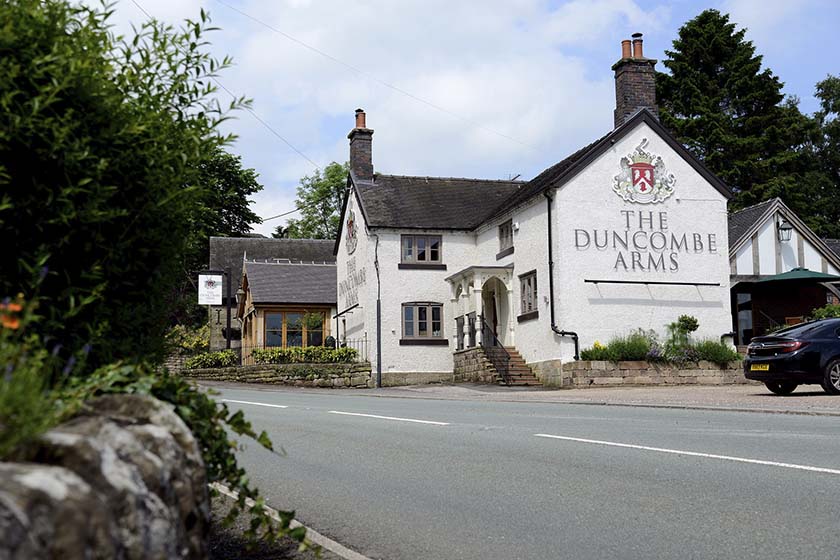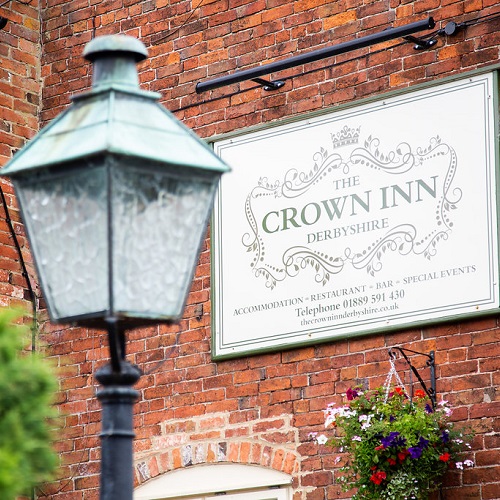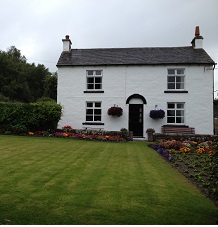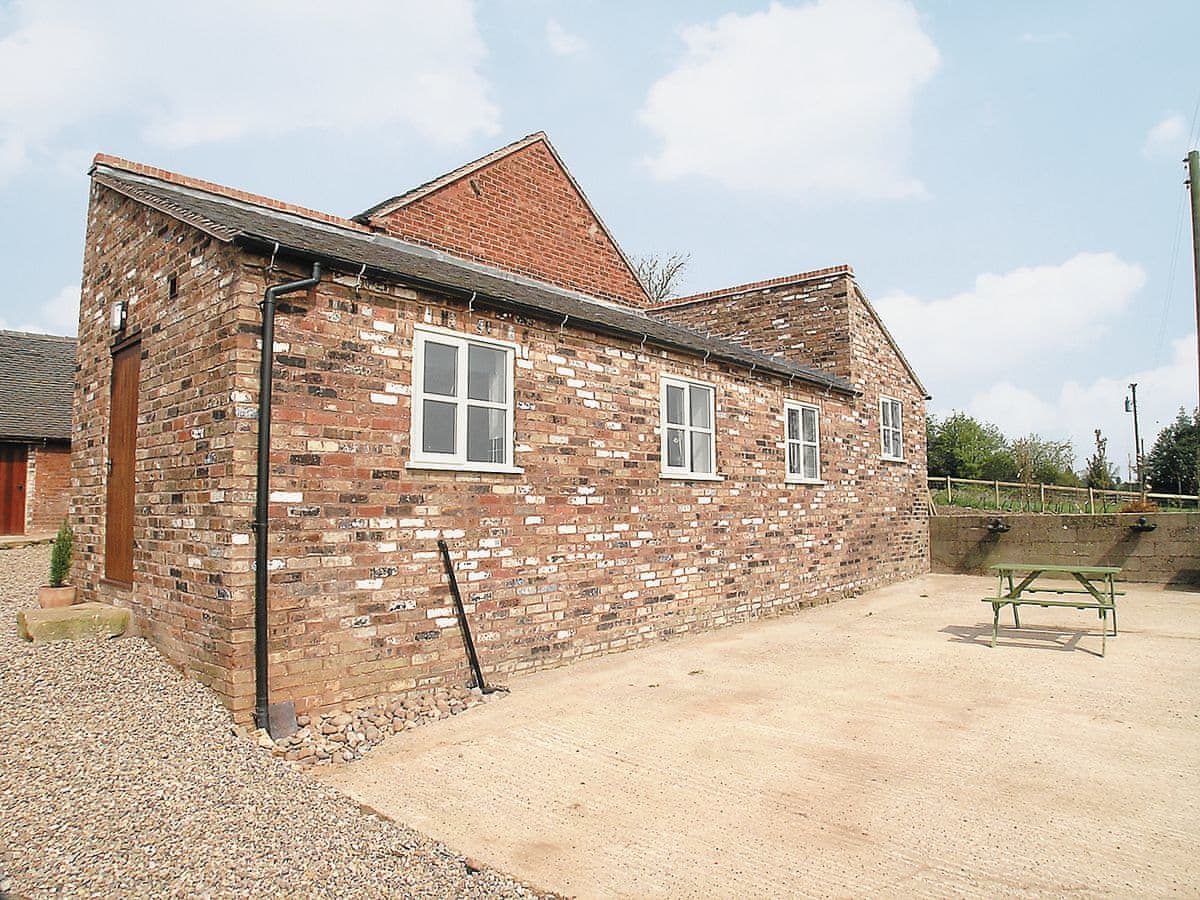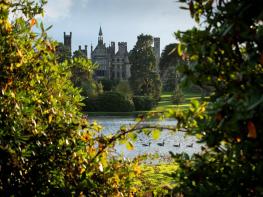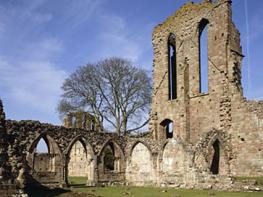In the rural village of Ellastone, The Duncombe Arms has gained a strong following since being…
Around Alton

A tranquil walk from the village made famous by its theme park.
5 miles (8kms)
About the walk
For its size, the village of Alton has more than its fair share of history, not to mention a name that's practically synonymous with stomach-churning, roller-coaster rides. The first recorded settlement in the area was an Iron Age fort on Bunbury Hill – the site of the present-day Alton Towers – built before 1000 BC. In the eighth century AD it became a fortress for the Saxon king Coelred, and in the 12th century it was given to a soldier by the name of Bertram de Verdun, as thanks for the part he played in the Crusades.
A conspicuous castle
In 1176 de Verdun built a castle high above the Churnet Valley, on the opposite side to the original fort. The castle remains are at the start of the walk but they're on the site of a children's centre, so you can only glimpse the ruined tower and walls. A sheer cliff lies below the north side, and on the east and south sides is a deep ditch. The lower parts of a wall remain, as does most of a rectangular tower and the base of a round tower. The castle is thought to have been in a state of neglect at the time of Verdun's death, and subsequent centuries did little to stop the rot. It was held for King Charles in the Civil War but later dismantled by Parliament to stop it being used by Royalists.
Opposite the castle is the present-day Catholic Youth Centre, begun in 1847 to a design by A W Pugin, who was partly responsible for the Houses of Parliament. Pugin was at the vanguard of the Gothic revival, when every landowner wanted a mock castle on his land, hence the battlemented cornices. Originally a private home, it was used as a boarding school from 1919 until 1989; and has been a youth centre since 1995.
While Pugin was rebuilding the estate, successive generations of the Talbot family began to rebuild the landscape, especially the area of Dimmings Dale to the west of Alton. Ore smelting had flourished in the valley for 150 years but by 1850 the industry was gone. Hillsides had been stripped of trees to fire smelting furnaces, spoil heaps littered the valley and the stream had been dammed to provide water to operate the smelting mill. Today, thanks to the Talbot family, the forest has been restored and the spoil heaps are gone, but the lakes and the original mill still remain as part of a peaceful forest walk.
Walk directions
At the castle gate, head straight down the track to the right of St Peter's Church. At the main road, head right, down the hill to the river and the Alton Bridge Hotel. Head left along a metalled road, past the hotel, going straight ahead where the road goes round to the left, along the base of Toothill Wood. Just after the road goes round an obvious hairpin bend, follow a wide track into the woods on the left, shown by a public bridleway sign. After 400yds (366m) go right off the track down a less obvious trail which will bring you out at Dimmings Dale car park and the Ramblers Retreat pub.
Go through the car park to the right of the pub and then continue straight on following signs for the Staffordshire Way. Pass the smelting mill and lake on your left, and continue straight on at the end of the lake, staying to the right of the impressive stone house.
When you climb up to a path junction amid the open woods, go straight over, following more Staffordshire Way signs, and still ascending. At the top of the hill go right along the metalled road, over a cattle grid and follow this road all the way to a T-junction.
Go left at the junction and, after 400yds (366m), go left again just before Old Furnace House. When you get to a fork in the track, head right, close to the stream and past a series of pools, until you get to a picnic table and a causeway between two pools.
Continue to the left of the stream after the final pool, staying on the left at the first wooden footbridge. When you get to a dry-stone wall barring the way straight ahead, go right over a wooden footbridge and continue to follow the river left. This path will shortly bring you back to the smelting mill and the Ramblers Retreat. From there head along the road back to the hotel and then retrace your steps back to St Peter's Church.
Additional information
Roads, gravel tracks and dirt trails
Forest and farmland
Can be off lead in woods
OS Explorer 259 Derby
Parking on Alton village roads
None on route
WALKING IN SAFETY
Read our tips to look after yourself and the environment when following this walk.
Find out more
Also in the area
About the area
Discover Staffordshire
It was Staffordshire that bore the brunt of the largest non-nuclear explosion of World War II, when a munitions dump at RAF Fauld went up in 1944. It was also the county’s regiment that once boasted within its ranks the most decorated NCO of World War I, in the person of William Coltman (1891-1974). Going back a little further, George Handel penned his world-famous masterpiece The Messiah on Staffordshire soil. During another chapter of Staffordshire history, the county was home to the first canals and the first factory in Britain, and it had front-row seats for the drama surrounding one of the most notorious murder trials of the 19th century, that of Doctor William Palmer.
In outline, Staffordshire looks not unlike the profile of a man giving Leicestershire a big kiss. The man’s forehead is arguably the best region for hillwalking, as it comprises a significant chunk of the Peak District. This area is characterised by lofty moors, deep dales and tremendous views of both. Further south are the six sprawling towns that make up Stoke-on-Trent, which historically have had such an impact on Staffordshire’s fortunes, not to mention its culture and countryside. This is pottery country, formerly at the forefront of the Industrial Revolution and the driving force behind a network of canals that still criss-cross the county.
Nearby stays
Restaurants and Pubs
Nearby experiences
Recommended things to do
Why choose Rated Trips?
Your trusted guide to rated places across the UK
The best coverage
Discover more than 15,000 professionally rated places to stay, eat and visit from across the UK and Ireland.
Quality assured
Choose a place to stay safe in the knowledge that it has been expertly assessed by trained assessors.
Plan your next trip
Search by location or the type of place you're visiting to find your next ideal holiday experience.
Travel inspiration
Read our articles, city guides and recommended things to do for inspiration. We're here to help you explore the UK.

